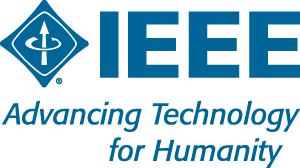
Oral Session B : Friday March 22, 2013 / 11:30 - 12:30
| 12 | Choice of Optimal Transmitter Criteria of O-MIMO Systems using MGDM Technique |
Faîçal Baklouti Rabah Attia Iyad Dayoub | |
Abstract: Mode Group Diversity Multiplexing (MGDM) technique is the better solution of optical communication over Multimode Fiber (MMF) to increase the robustness and the capacity of the system. MGDM is an Optical Multiple-Input-Multiple-Output (O-MIMO) technique which exploits at most the fiber bandwidth and increases the fiber capacity using spatial launching and reception. In this paper, we study the choice of optimal transmitter criteria to be used for light launching. The case of a 3x3 MGDM link is discussed and Matlab results are given. | |
| 87 | A New Light-path Rerouting Scheme with Minimum Service Disruption Time for Scheduled and Random Traffic in WDM All-Optical Networks |
Naama Amdouni Mohamed Koubàa Taoufik Aguili | |
Abstract: In WDM all-optical networks without wavelength converters, rerouting is applied to alleviate the inefficiency utilization of a network resources brought by the wavelength continuity constraint imposed by such a network. When an incoming light-path demand (LD) cannot be satisfied due to a lack of network resources, rerouting is proposed to rearrange the wavelength and/or the path of certain existing LDs to free a wavelength-continuous route in order to set up this new LD to be blocked for lack of resources. In this paper, we propose a new RWA strategy applying Light-path Re-Routing (LRR) to optimize the efficiency utilization of network resources. This new LRR scheme considers two traffic classes referred to as scheduled light-path demands (SLDs) and random light-path demands (RLDs). SLDs correspond to high priority traffic while RLDs correspond to best effort traffic. Already established SLDs rerouting is forbidden while the establishment of a new RLD may require the rerouting of not routed yet SLDs and already routed RLDs. Through simulation results, we outline that our algorithm improves the rejection ratio, minimizes the service disruption time due to rerouting and is less CPU time consuming than rerouting algorithms previously presented in the literature. | |
| 122 | Study of a photonic crystal structure etched into a guide Ti: LiNbO3 for emitting light at 1.55 μm |
Khéareddine Khémiri Tahar Ezzedine Houria Rezig | |
Abstract: Within the framework of the guided planar optics, we focus our study on the properties of 2D photonic crystals Ti: LiNbO3 for light propagation. To optimize the structure of Mach-Zehnder electro-optical modulator, we modeled different geometry, a double 60° followed by another double 60°, then a double 60° followed by a LOM (Laterally Over-Modulated). The numerical method by Finite Difference Time Domain (FDTD) shows that the intensity of the light transmitted by the double 60° structure followed by a LOM (TM) is better than a double 60° followed by a double 60° at the wavelength 1.55μm. In other hand the S11 and S21 parameters show a satisfactory behavior for the transmission and reflection for the double 60° structure followed by a LOM (TM). | |


Associated Laboratories
 |
 |
 |
 |
Gold Sponsors
 |
 |
 |
 |
 |
|||

![[Alternative text]](../lib/images/photos/tunisieBanners/1.jpg)
![[Alternative text]](../lib/images/photos/tunisieBanners/2.jpg)
![[Alternative text]](../lib/images/photos/tunisieBanners/3.jpg)
![[Alternative text]](../images/templatemo_banner.png)